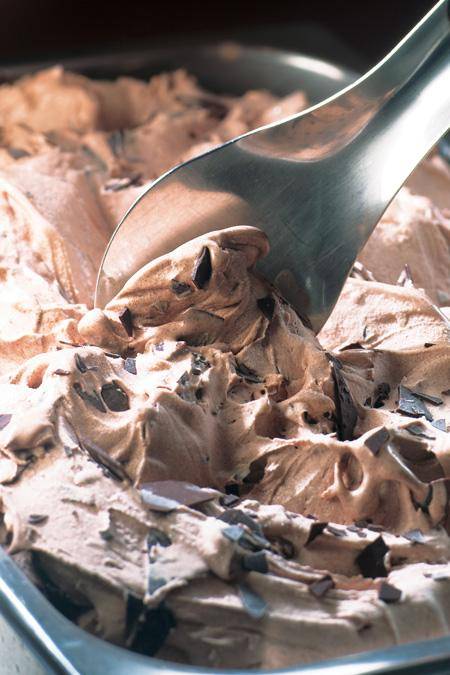Emulsifying, stabilising and thickening agents
The necessity of pasteurisation and sterilisation
Emulsifiers, stabilisers, thickeners and gelling agents are all examples of food additives that ‘stabilise’ a mixture. They generally serve two main purposes:
- Thickening/gelling: Thickening and gelling agents either cause a mixture to thicken or cause the water in a mixture to congeal.
- Emulsifying: Emulsif ying agents make it possible to mix two immiscible liquids together (e.g. water and oil).
Stabilisers are primarily used for:
- Enabling and facilitating the dispersion of air through the ice cream mixture, making it soft and creamy.
- Creating a better structure, enabling the formation of small and regular-shaped ice crystals, and producing a homogeneous melting behaviour.
- Improving the stability and structure during storage.
- Preventing ice cream from melting too fast when serving it.
Thickening agents are usually of vegetable origin (e.g. locust bean gum (E410), guar gum (E412), carrageenan (E407) and pectin (E440)). It’s interesting to point out that the main stabilisers used by the ar tisan ice cream maker are locust bean gum and guar gum.
Emulsifiers are additives that increase the kinetic stabilit y between water and the fatty/oily ingredients in a mixture, making them both stable and enabling them to be mixed together. The ones most commonly used by ice cream manufacturers are monoglycerides, diglycerides and lecithin.

Stabilisers and neutro for ice cream
Thickeners and emulsifiers make up the so-called stabilisers or neutro for both ice cream and sorbets. The main difference is in their composition:
- stabilisers for sorbets:
- consist primarily of thickeners (flour of locust bean gum, guar and often alginates as well)
- dosage is 3 g per litre of mixture
- stabilisers for ice cream:
- consist of both thickeners (flour of locust bean gum, guar gum alginates) and emulsifiers (sucrose esters and mono- or di-glycerides)
- dosage is 5 g per litre of mixture
In the market, a variety of stabilisers for creams and fruit is available. It is recommended to ask the vendor for a technical sheet with their precise composition.
The basic “semi-finished product in powder”
Specialised suppliers of ice cream ingredients also offer semi-compounds, called bases (in various weights of use). These are ideal when the ice cream maker prefers to use minimal quantities of stabilisers. They exist in various densities (from 30 g to 400 g per litre of mixture). The ones most widely used are the Base 50 or 100 g – mainly composed of thickeners, emulsifiers, milk powder, sugar, flavouring and milk proteins.
Note: Ask your vendor or supplier for the technical sheet that comes with your stabiliser. It will help you get your recipe breakdown just right.
Some tips that will definitely come in handy:
- Always mix one part stabiliser with ten parts sugar before adding them to your ice cream mixture. This way you’ll avoid lumps in the mixture and the stabiliser will disperse more easily through it.
- Always mix in your stabilisers at a temperature of 40°C. At that temperature, stabilisers become most active: they’ll absorb more and display better swelling characteristics.
- And they exist in specific varieties for fruit bases or cream bases. They’re made for hot and cold applications, with various formulations and compositions, which allow different dosages. The final goal is to obtain a balanced mixture and a perfect texture for your ice cream or sorbet.

